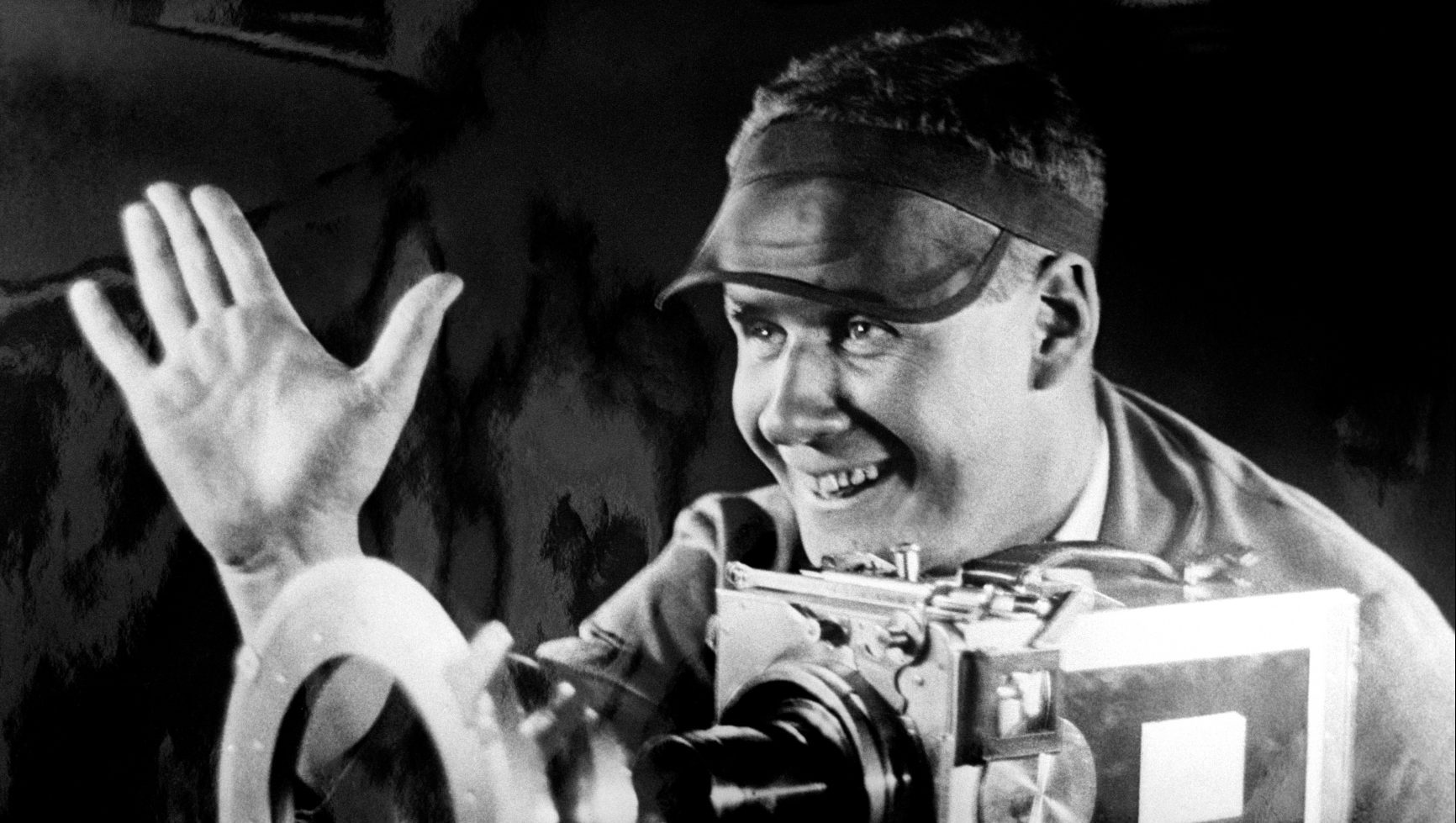We can all come up with contenders for the greatest scene in the history of cinema. The shower scene from Psycho, the singing of the Marseillaise in Casablanca, some could even make a case for “I’ll have what she’s having” from When Harry Met Sally.
Few standalone sequences can be said to have changed the way cinema was
made, however, transcending their films to become part of the wider cultural consciousness retaining an influence still discernible today.
It is nearly a century since Sergei Eisenstein’s Battleship Potemkin was
released, yet a six-minute silent sequence depicting a brutal massacre of
civilians by imperial Russian troops on the steps leading down from the city of Odessa to the Black Sea is instantly recognisable even now. “Iconic” is a
word grievously misused today, but it certainly applies to a scene including
such familiar images as the open-mouthed grandmother shot in the eye, her pince-nez smashed and blood running down her cheek, or the bereft mother of a small boy carrying his broken body towards the advancing troops, or, arguably the most memorable image of all, a baby carriage bouncing down the steps past the dead as a horrified mother looks on (played by Beatrice Vitoldi, later the first Soviet ambassador to Italy and a victim of Stalin’s purges).
The Odessa Steps scene from Battleship Potemkin is remarkable for
many reasons. It’s a rare example of blatant propaganda enduring on purely
artistic merit. When it crossed outside the borders of the Soviet Union, the film could have sunk without trace. Indeed, it was banned immediately as
subversive in a Britain fearful of communist revolution and its distribution was strictly limited in the US, so much so that only film industry insiders who had heard of its brilliance were able to see it. According to rumour, it was imported into the US by Douglas Fairbanks Jr and Mary Pickford, with one early screening taking place in the New York apartment of Gloria Swanson, beamed on to a bedsheet pinned to the wall (“Nobody went Bolshevik,” said Photoplay magazine, “but a lot of people left with some revolutionary ideas of filmmaking”).
David O. Selznick attended one of these screenings and, declaring it
“unquestionably one of the greatest motion pictures ever made”, lobbied
MGM to source a print to be studied “in the same way that a group of artists
might study a Rubens or a Raphael”.
This opinion still holds water today, with Battleship Potemkin featuring near
the top of just about every countdown of the greatest films ever made, confirming it as the creation of a visionary genius, someone immersed in
cinema and its artistic possibilities in its earliest days and who genuinely changed it for ever.
Perhaps the most remarkable aspect of all is that the film’s director, Sergei Eisenstein, was in his mid-20s at the time and it was only the third film he had ever made.
Eisenstein was a committed revolutionary despite coming from a comfortable bourgeois background. His father was a well-known art nouveau architect in Riga in the twilight years of imperial Russia, but with his parents’ marriage deteriorating Sergei was raised by his mother in St Petersburg. He looked set to follow his father’s trade and studied architecture and engineering until the Russian Revolution prompted a political and personal epiphany in his late teens.
Eisenstein enlisted in the Red Army and soon rose to an officer’s position
during the fractious period that followed the revolution, during which
he proved adept at producing highly effective Bolshevik propaganda. A move
to Moscow in 1920 saw him join the arts organisation Proletkult, tasked with
establishing an avant garde, working-class aesthetic in Soviet culture, as a theatre director and designer. In 1923 he directed his first film, a five-minute short called Glumov’s Diary.
Two years later, in the spring of 1925, Eisenstein made his first full-length feature, Strike, in which factory workers protest at appalling working conditions and are brutally suppressed, then just a few months later came Battleship Potemkin, released to mark the 20th anniversary of the 1905 mutiny by crew members during which the early seeds of the 1917 revolution were sown.
It was as if Eisenstein, 27 years old, had arrived in the director’s chair fully
formed. Not only did he have a strong sense of cinema’s artistic possibilities,
he had the confidence to put into practice a theory of filmmaking he had devised himself: the dialectical montage. Eisenstein believed that a film’s message was best expressed by a series of contrasting images, each just a
few seconds long (the 75-minute Battleship Potemkin consists of more
than 1,400 shots). In his mind it was a distillation of Marxism itself, a new outcome emerging from two opposing forces, and he compared his vision to
“the series of explosions of an internal combustion engine, driving forward its automobile or tractor”. The Odessa Steps sequence was arguably his most
successful practical implementation of his theory, close-ups of terrified civilians between shots of the soldiers’ feet, relentlessly marching in step like
automated killing machines as their victims scattered and panicked.
Battleship Potemkin established Eisenstein as a visionary filmmaker, and when he travelled, first to Europe and then to the US, in order to study the
introduction to film of sound he was greeted as a genius. He was offered and
accepted a $100,000 contract with Paramount Pictures, only to leave when the commercial considerations of the Hollywood studio system clashed with
his political and artistic idealism. He crossed the border for an abortive attempt to make a film of Mexico’s history, before returning to the USSR when Stalin began expressing unease at the amount of time the filmmaker had been spending abroad.
Before leaving for Europe Eisenstein had divided opinion at home with October, a sprawling account of the 1917 revolution to mark its 10th anniversary. While hailed by some as a triumph of filmmaking, others found it self-indulgent. It took until the 1938 medieval epic Alexander Nevsky, with a
soundtrack composed by Sergei Prokofiev, for Eisenstein to win over Stalin and the Soviet people again, while towards the end of World War Two he made another venture into Russian history in adapting the life of Ivan the
Terrible. The first film won him the Stalin Prize and is regarded as his third
masterpiece after Potemkin and Nevsky. By contrast, the sequel was rejected by the authorities and not released until 1958 during the post-Stalin cultural thaw under Nikita Khrushchev.
While working on the third film in the trilogy in 1946, Eisenstein suffered the heart attack that would lead to his death two years later at the age of 50. He had never lost the revolutionary idealism to which he had applied his visionary theories of film despite falling foul of the Soviet authorities. His international reputation may have saved him from falling victim to Stalin’s purges, while the film, and in particular the scene, that established that reputation endures today as one of the major turning points in the history of cinema.




